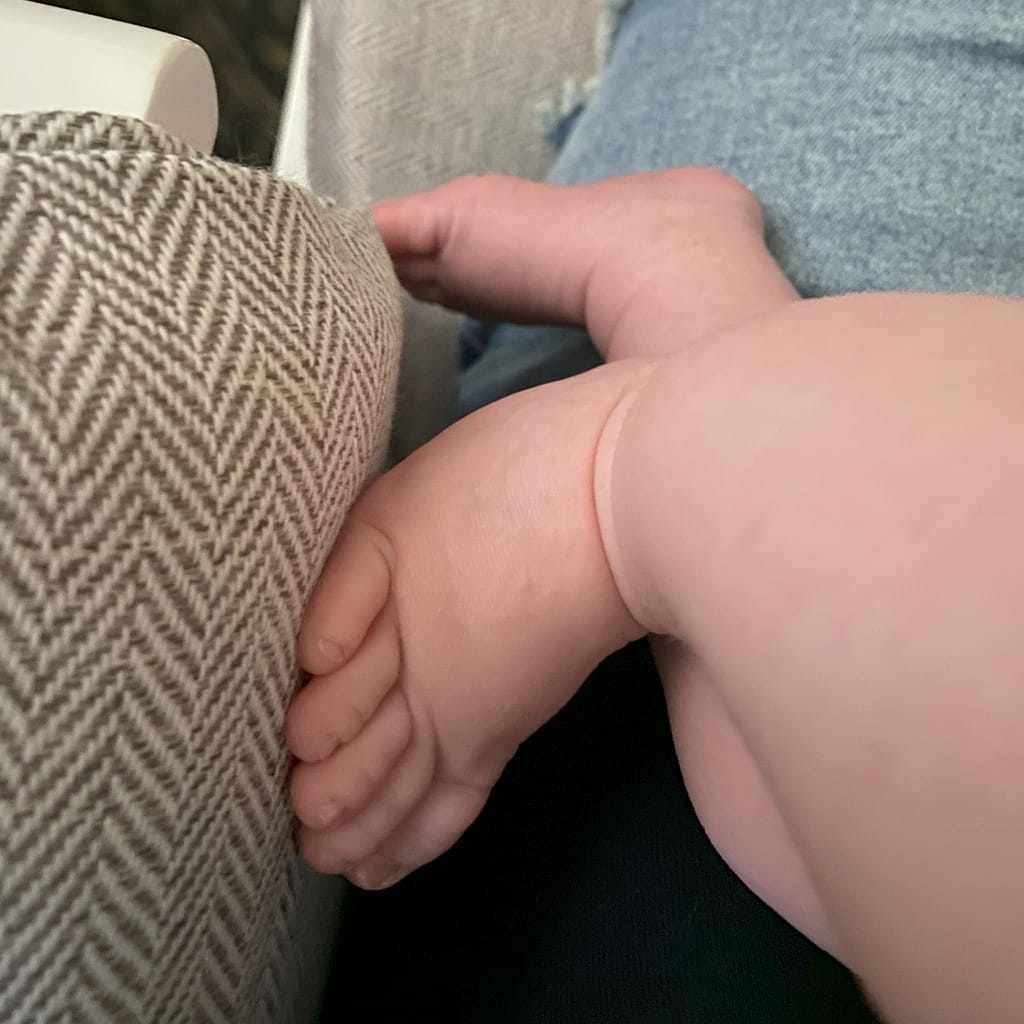Our most recent OCONUS move was from Italy to the States in October 2024. At the time, my second child was about six months old and still nursing. I had quite the freezer stash of breastmilk and wrestled with whether or not to try to bring it with us.
To be honest, this was one of the biggest pieces of logistics for me for this move. Because we were OCONUS, the only way to move my milk was to take it on the plane with us. But the ins and outs of moving breastmilk seemed daunting.
Ultimately, we made an attempt. To save you the suspense, it was a successful attempt. Here’s how we moved my breastmilk across the world.
The Before: How I Prepared to Move My Breastmilk Internationally
We flew American Airlines (and their partners), and had one Stateside layover. Our total flight time was 14 hours, but we were in transit for closer to 25-26 hours. We packed the frozen milk in a cooler. Because we were on orders, the cooler was one of our checked bags, and there was no cost. Although this worked for us at the time, remember that flying regulations and fees may differ.
We moved out of our house in Italy and into a hotel 10 days before we were flying. Thankfully, it was a longer-stay army hotel, so it came with a full-sized fridge. Previously, I had frozen breastmilk flat in relatively small amounts, about 2-4 ounces each. I then put those individual bags into gallon-sized zip-lock bags so they formed a sort of brick. Looking back, I estimate I got 15-20 breastmilk bags into each gallon bag, and had 4 gallon bags.
In my research, I found other women who successfully used Yeti coolers for airplane travel. Husband and I bought a Yeti Roadie 24 hard cooler without wheels when it was on sale for $180. We figured it would hold up well in transit and be reusable. (Funny side note: we did use it again. It was our end table in our living room for three months before our household goods arrived!)
I also got some NICE ice packs from Amazon. Many people recommended dry ice, but I hesitated to try it since I had zero experience. While Googling, I learned that dry ice in a sealed container can explode, which seemed risky during air travel. The NICE packs stayed cold for a long time and could be cut, which helped fill space.

The During: Holding My Breath and Crossing My Fingers
A day or so before, I did a practice pack of the cooler. This helped me determine how big to make my ice packs so that I could freeze them. I can’t remember if I used a towel at the bottom of my cooler, but I don’t think so. If you have extra space, use a towel or newspapers to help fill it. You want your cooler as tightly packed as you can manage. Air swirling around in there is the enemy.
The day before we left (and overnight), I pre-chilled the Yeti with ice in the hotel. The morning of, we packed the cooler with NICE packs and milk. I got four gallon-sized bags of breastmilk, plus 2-3 NICE packs cut into various sizes. I wasn’t stingy with the ice packs – I wanted to be sure the frozen milk stayed frozen, even if that meant taking less milk.
Prior to our flight, I marked our cooler with our name and destination address on bright duct tape on the outside. I also made sure it said “breastmilk” on the outside. I used (more) duct tape to help keep the lid closed, but minimally. That way, if someone needed to open it and check the contents, they could close and tape it again easily. It made me feel better to have something else keeping the lid closed in case the cooler clips popped open.
During our layover, we had to pick up our baggage and recheck it. I resisted the urge to open and peek in to check the milk. I had already resigned myself to being okay if it all defrosted, and I had to let it go. Opening the cooler would only let in warm air and encourage things to defrost faster.
The After: Success on Arrival
We booked our own hotel at our destination. Since we were paying out of pocket, I ensured the room had a minifridge. However, I was hopeful the staff would let me put it in a kitchen cooler. We would be at this hotel for three nights.
Once we got into our hotel, I don’t think I opened the cooler until the next morning (although curiosity might have gotten the best of me). With two small kids, a long day of travel, and arriving after bedtime, I didn’t have much time to manage milk.

Early the next morning, I checked the bags and they were okay. The hotel did not have a freezer I could use to store the milk, so throughout our stay, we alternated between ice in the cooler and the mini fridge freezer. The most defrosted bags got moved to the mini fridge, and the rest stayed in the cooler with ice. The freezer would refreeze the bags (ok by CDC guidelines, so long as some ice crystals remain), and the ice would keep the refrozen bags cold.
I won’t lie—this whole process was tricky business. And I definitely got my arm workouts in every day, lugging ice from across the hotel back to our room. All in all, I lost three individual bags of breastmilk. These guys were last-minute finds and weren’t in larger gallon-size bags with other milk. I still saved those and used them for baths.
After our hotel stay, we had a 90-minute drive to our house, plus additional time to tour and sign papers. Luckily, our realtor gave us somewhere to store the breastmilk for the appointment (that wasn’t in the hot car). I’m not sure it would have lasted in the heat for the entirety of the signing appointment.
Other Options for Moving Your Breastmilk
While it’s not easy, moving frozen breastmilk internationally is possible. I have read where some women choose to take their milk on the plane with them as a carry-on. Our volume was more than I wanted to manage, considering we also had two small kids and all their things.
Depending on where you’re traveling from, choosing a company with overnight shipping, like FedEx or UPS, may work for you. I know FedEx offers a refrigerated shipping option. Of course, you need someone at your gaining unit to store it for you. This option might not be the best choice for an OCONUS move, but it’s certainly plausible for a CONUS PCS.
I also know women who have chosen to freeze dry their breastmilk. We briefly considered that, but would have had to send the milk to Slovenia. The cost and time involved didn’t work with our timeline. While I haven’t had my milk freeze dried, here is a link to the firsthand experience of someone who has.

If you’re the service member, you may qualify for financial assistance when moving your breastmilk. I haven’t read up on it, but below are a few links to articles you may find helpful.
Hopefully, this will help you plan your move and make you more confident about moving with breastmilk. It can be done!
Additional Information
Looking for more information on traveling with breastmilk? Here’s a list of helpful links.
CDC: FAQ, including guidelines on partially frozen breastmilk
CDC: Travel Recommendations for Nursing Families
Defense.gov article: DOD Will Offer Reimbursements for Breastmilk Shipping Expenses Under New Policy
TSA website for traveling with breastmilk
Freeze Drying Company: Milkify
Freeze Drying Company: Milk By Mom
Looking for More Help During Your PCS?
Check out my free eBook Moving with the Military: Unaccompanied Baggage. In it, I offer a more comprehensive packing list to help you think through what to pack for your move. You can also find all our PCS-related posts in one spot by clicking the Moving + PCS Season graphic.



